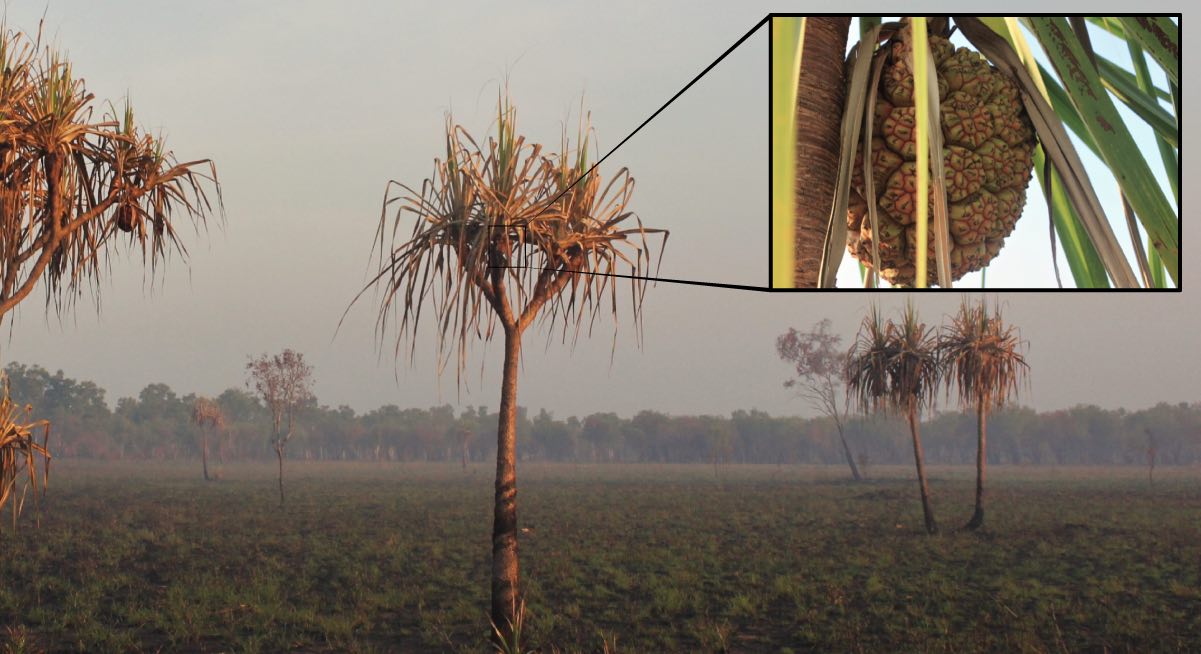Rainfall in a nutshell
P. spiralis trees on the Magela Creek floodplain near Madjedbebe, with an inset displaying the cephalium. Credit Florin et al.
Across the world, it’s what humans and other organisms have left behind that’s advanced our understanding of the Earth’s past. From pyramids to garbage piles, such leavings also preserve the opportunity to understand human history at the time these things were made or discarded.
When it comes to continuous Earth history, it doesn’t get much better than a 65,000-year-old rainfall record. That’s what archaeologists are generating from the ancient food scraps found at Australia’s earliest-known site of human occupation, in the Northern Territory.
Related Keywords
Northern Territory , Australia , Kakadu National Park , Australians , Australian , Justin Obrien , Chris Clarkson , Anna Florin , Gundjeihmi Aboriginal Corporation , Centre Of Excellence , University Of Queensland , Uq School Of Social Science , Mirarr Traditional Owners , Mirrar Country , Alligator Rivers , Last Glacial Maximum , Last Glacial , Traditional Owners , Arnhem Land , Kakadu National , Australian Biodiversity , Social Science , Aboriginal Corporation , Justino Brien , Nature Ecology , வடக்கு பிரதேசம் , ஆஸ்திரேலியா , காக்கது தேசிய பூங்கா , ஆஸ்திரேலியர்கள் , ஆஸ்திரேலிய , ஜஸ்டின் ஓபிறீேன் , கிறிஸ் கிளார்க்சன் , அண்ணா ஃப்ளோரின் , மையம் ஆஃப் சிறப்பானது , பல்கலைக்கழகம் ஆஃப் குயின்ஸ்லாந்து , அக் பள்ளி ஆஃப் சமூக அறிவியல் , முதலை ஆறுகள் , கடந்த பனிப்பாறை அதிகபட்சம் , கடந்த பனிப்பாறை , பாரம்பரிய ஓநர்ஸ் , அர்ன்ஹெஞ் நில , காக்கது தேசிய , ஆஸ்திரேலிய பல்லுயிர் , சமூக அறிவியல் , தொன்முதுவர் நிறுவனம் , ஜஸ்டினோ பிரையன் , இயற்கை சூழலியல் ,
comparemela.com © 2020. All Rights Reserved.
